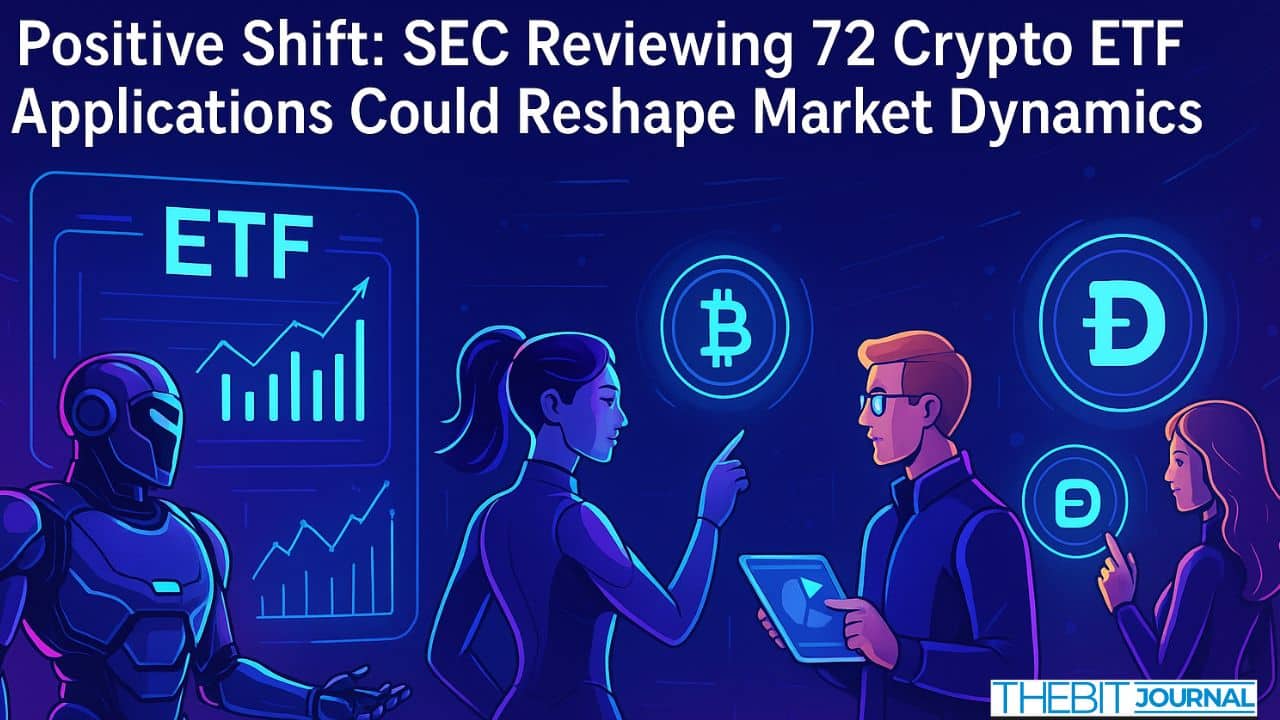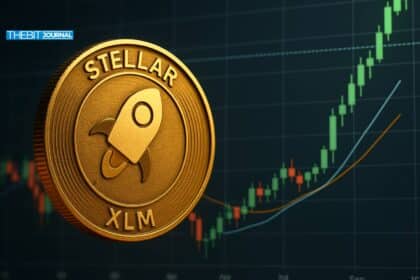The US Securities and Exchange Commission (SEC) is reviewing 72 crypto ETF applications for derivative exposure. The Bloomberg ETF analyst Eric Balchunas brought forward this major advancement which introduces digital assets to conventional investment platforms. The filed applications showcase cryptocurrency assets of both established types, including Solana (SOL) and XRP and emerging memecoins, including Dogecoin (DOGE).

Diverse Crypto ETF Filings Show Industry’s Push for Broader Exposure
James Seyffart from Bloomberg compiled the extensive list of 72 filings, which he released publicly. The filing proves issuers actively seek to develop crypto ETF that cover different types of digital assets. ETF providers are developing spot products for popular altcoins, including Solana, XRP, and Dogecoin, together with thematic funds based on internet phenomena like Pudgy Penguins.
ETF proposals include both leveraged and inverse funds tied to Solana derivative products along with XRP derivative products. The ETF issuers request authority to allow options trading capabilities on Ethereum (ETH) and Bitcoin (BTC) funds which enables additional advanced trading options for investors.

According to Seyffart in his research summary “the fast evolution of the ETF market toward crypto diversity becomes clear through these various proposed funds.”
ProShares and Tuttle Capital seek investors in speculative trading through their new filings which provide instruments to track real-time price changes of particular digital assets.
Industry Experts See Strong Potential in ETF Approvals
The approval of crypto ETF would create greater accessibility and institutional investment legitimacy for many cryptocurrencies inside financial institutions. According to crypto sources, Balchunas described ETF listing through an analogy linking it to music streaming exposure.
“Having your coin get ETF-ized is like being in a band and getting your songs added to all the music streaming services,” Balchunas explained..
The popularity boost comes despite limited assurance of attention because these platforms place content in front of most audience segments.

This development shows no boundaries regarding its market reach beyond established financial products. ETF proposals are now showing interest in memecoins because their community growth strategy proves attractive even though these coins are known for their volatility. ETF propositions would deliver a managed method for regulated investment in these currently trending cryptocurrencies.
Bitcoin Expected to Maintain Its Dominance
The multitude of recent ETF applications has not taken away the leading position of Bitcoin within the crypto ETF sector. Balchunas reports that Bitcoin controls more than 90% of worldwide crypto fund assets. He predicts that Bitcoin will remain dominant with 80–85% of the total market even if every one of the 72 ETFs receives approval.
Bitcoin retains its market position because of its established performance together with its attractive features for institutions and its current regulatory structure. The upcoming new products will expand the choice but will fail to unseat Bitcoin from its position as leading asset in the ETF sector.
SEC Decisions Expected to Influence Broader Market Trends
The SEC started evaluating 72 crypto ETF applications, along with their derivatives stage, which proves that crypto financial regulation continues to grow. The market sentiment will remain affected by these application decisions throughout the future until mid-2025.
Managerial assets and retail investors benefit from these emerging developments. The availability of ETFs increases investment opportunities because it enables portfolio diversification as well as offers simpler methods of exchange access to crypto assets.
Crypto ETF and Investors Face Upcoming Changes in the Market
The cryptocurrency ETF market displays its dedication to reaching investors of different risk profiles through its entire product range that spans from straightforward spot ETFs to complicated leveraged instruments. These approved ETFs may establish proper legal frameworks which enable pension funds and institutional investors to participate in crypto asset investments.
Investors should pay attention to official updates issued by the SEC. Regulatory bodies maintain a high level of caution toward approving such products at the current moment. These ETF applications will succeed according to their ability to comply with present financial regulations and investor protection standards.
FAQs
Q1: What is an ETF?
ETFs represent investment products that monitor the value performance of fundamental assets which could include stock market indexes as well as commodities and digital currencies.
Q2: Why is SEC reviewing 72 crypto ETF applications important?
The process of SEC examining 72 crypto ETF applications holds substantial importance for several reasons. The number of crypto ETF applications available to the SEC shows rising interest from institutions as well as regulatory changes that welcome crypto assets into financial market systems.
Q3: Which cryptocurrencies are included in the filings?
The documentation contains information about which cryptocurrencies have received inclusion. There are two categories of available Exchange-Traded Funds in the market: XRP, Solana, Litecoin, Dogecoin and Pudgy Penguins themed funds.
Q4: When are the SEC decisions expected?
The SEC will provide their decisions for the cryptocurrency ETF applications during Q4.
The SEC plans to make several decisions by mid-2025, yet it has not announced the exact dates of approval.
Q5: Will all 72 applications be approved?
There is no guarantee. The SEC will evaluate these offerings according to financial and investor protection regulations.
Glossary of Key Terms
ETF: The financial instrument called Exchange-Traded Fund operates to track specific assets which trade as shares on the stock market.
Spot ETF: The Spot ETF serves as an ETF that practically holds an asset instead of derivatives or futures contracts.
Derivatives: The value of derivatives depends on the price of an underlying asset, which could be a cryptocurrency.
Leveraged/Inverse ETF: These products serve two functions by strengthening or eliminating the performance of target assets.
Memecoin: The initialization of Memecoin generates digital values related to trending memes on the Internet, which tend to experience erratic price fluctuations.
References
Bloomberg Analyst Eric Balchunas – Twitter
James Seyffart – Bloomberg ETF Tracker
U.S. Securities and Exchange Commission – Official Website
Follow us on Twitter and LinkedIn and join our Telegram channel to be instantly informed about breaking news!


























